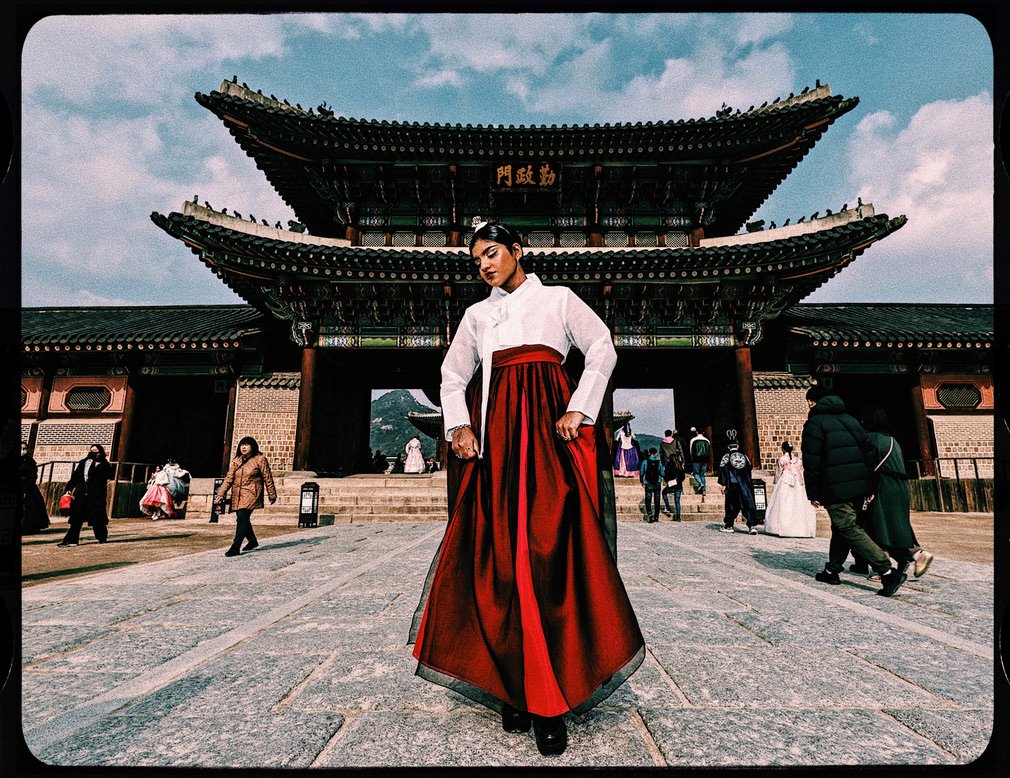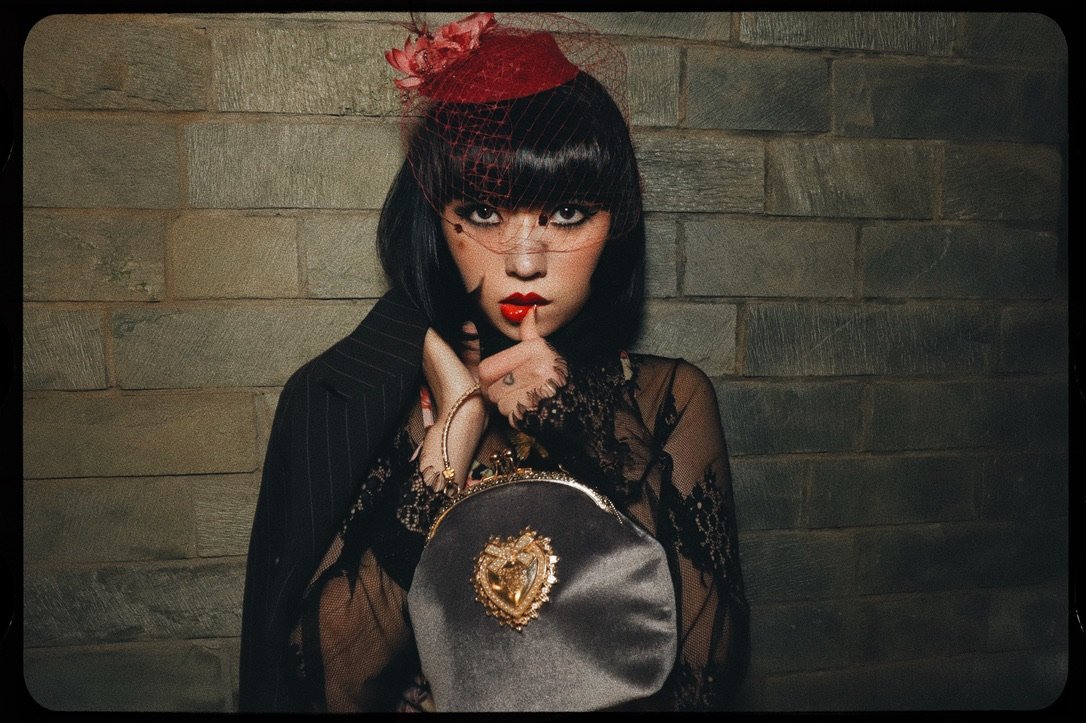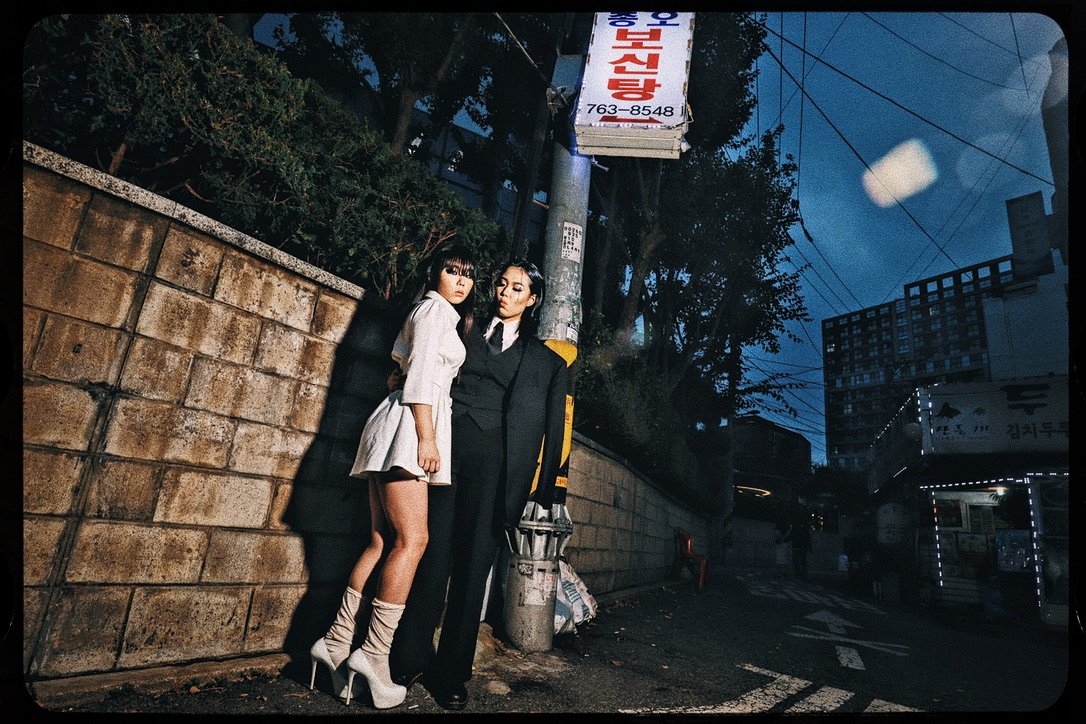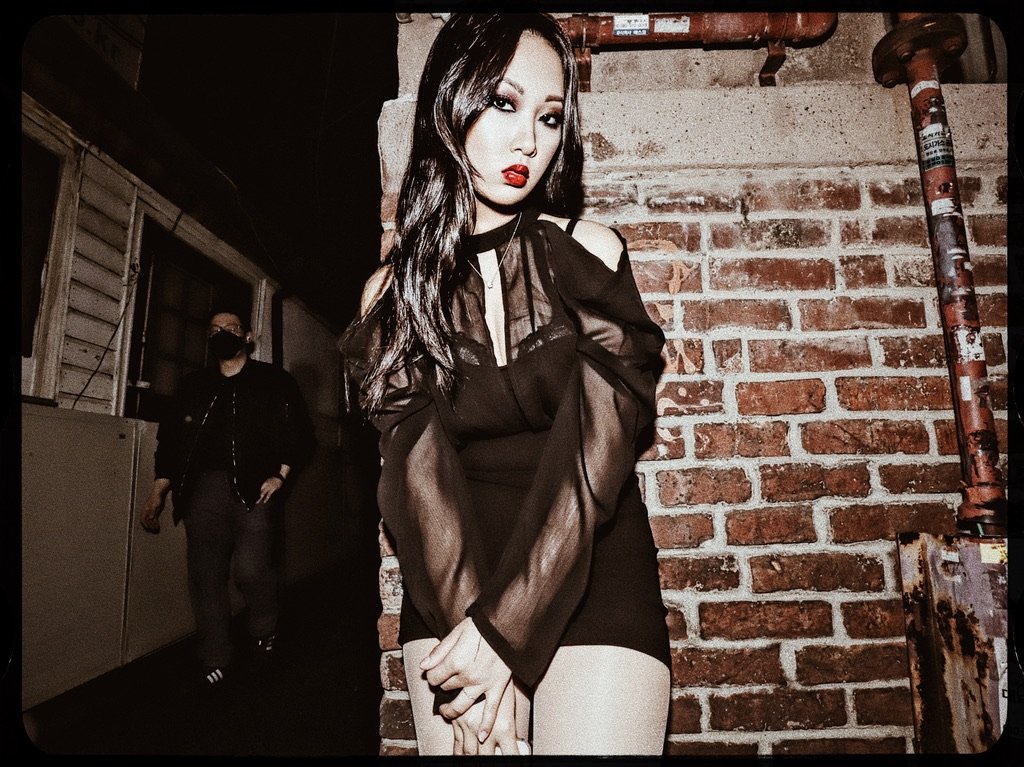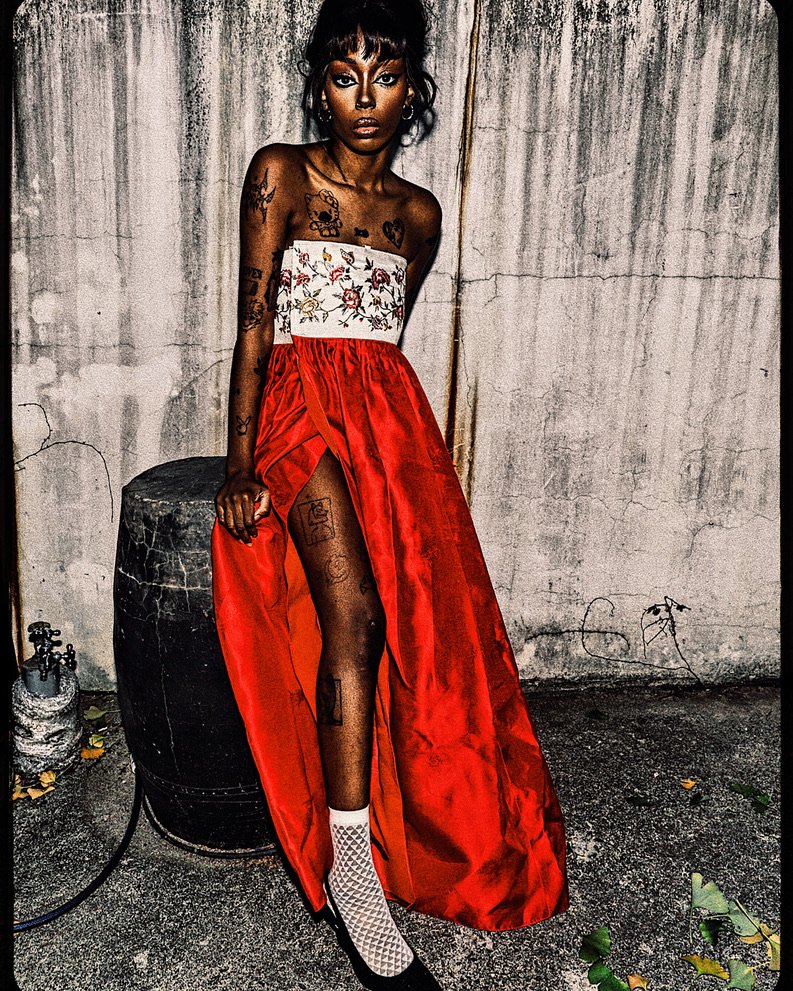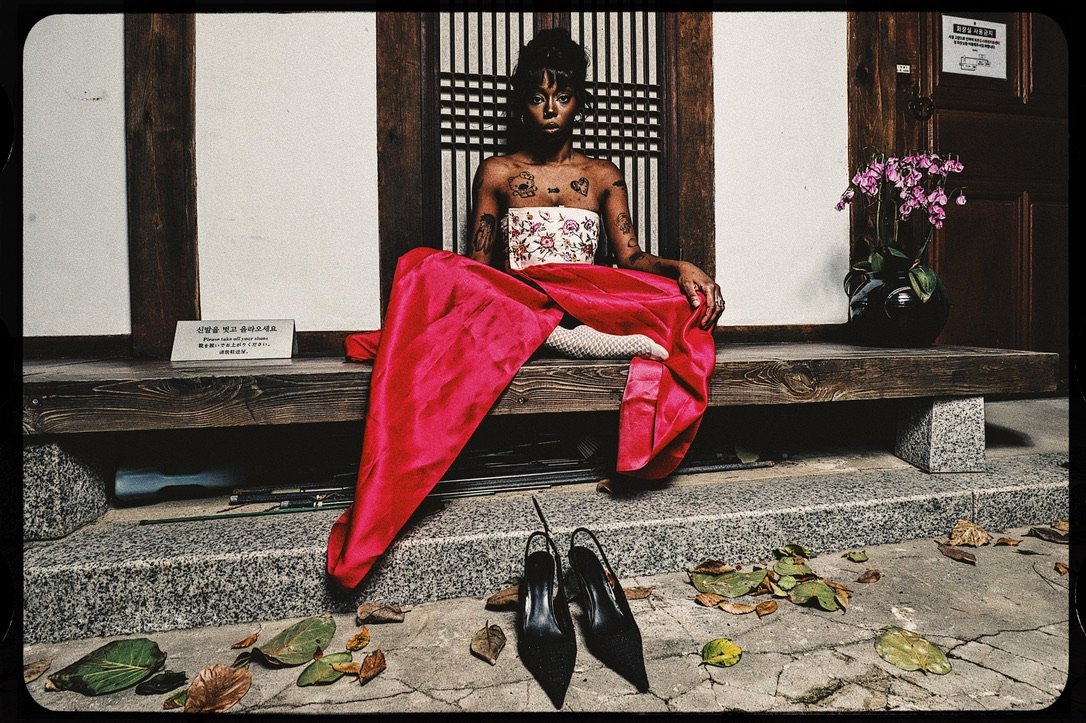Imag(in)ing Jongno
Model @klubkancerkid travels back in time to put a different spin on the hanbok NOT in alabaster skin.
Every Korean neighborhood is bigger than its boundaries and lives within a popular imagining. “Gangnam” is the best example, as the word literally translates into “south of the river”, yet since half of the city exists below the river even as only a certain strip of neighborhoods running nearby the green #2 line such as Apgujeong, Non-hyeon, Cheongdam, Yeoksam, and Samseong-dong really qualify as ritzy “Gangnam”, certain other places such as Shillim, Noryangjin, Guro, or Mullae-dongs don’t get included. All those other places are just as south of the Han River as the others, and no more nor less distant from the river itself. Yet for some reason, only a certain imagining of the Gangnam concept defines the area, and every Seoulite — nay, every Korean—agrees on this social definition.
In our ongoing project, November is the month when we move through Jongno to image/imagine it through bodies, lenses, and the spaces that define the area, while also closely following the social definition of that spatial concept.
Model @pary_adventures models a rented hanbok smack in the middle of the Gyeongbok Palace complex much better than any mere tourist would, but she still kept the mood demure and Traditional.
Easiest to include (and shoot) as “Jongno” might be the network of hanbok rental shops surrounding the many palaces scattered all around downtown, old Seoul that existed for centuries before Gangnam was anything other than farmland. Indeed, “Jongno” is the old streets and back alleys filled with old folks, palaces and traditional structures down and around City Hall up through Gyeongbok Palace and over above the traditional arts area of Insadong; it stretches even up to Anguk-dong and the Bukchon Hanok Village. It all sounds like a lot, but these places are all within easy walking distance from one another.
This month, one challenging feature of Jongno is that there wasn’t really any clear dividing line between Jongno and Not Jongno, and there weere so many clear sub-hoods within larger, official neighborhoods, such as how Ikseon-dong exists as a tiny hood inside the Jongno 5-ga area, and one must indeed must get off at that stop to go to any of the retro places in Ikseon-dong. Perhaps another defining feature of the areas of “Jongno” have to do with the fact that pretty much the entire area is covered and made accesible by a network of local commuter “village” buses that all circle around stops on Jongno.
Model @jingruus channels her best “modern girl” attitude while gussied up in accessories from the @ikseonboutique snuggled right in the heart of Ikseon-dong.
Model @darklypink acts as an oasis of performed innocence strewn into a maelstrom of sordid desires and discarded things.
Alternatively, Jongno is also dirty back alley pulsating with the neon promise of sex, punctuated by dirt and old, discarded things. The big main thoroughfare of Jongno is where big, official things happen; the parallel side alley is where dreamget dirty and eventually die. There are many different facets to the place as we shoot through it, not only utilizing the spaces as mere backdrops, but by letting them define what we do within them, what looks right inside them. For example, the area around Nagwon Market has always been known as the old-school gay center of Seoul, so having our model be both female even within the scripted gender roles seemed apropos of this history, which it invokes by example.
Models @darklypink and @lenx.zxc re-enact Shin Yun-bok’s (in)famous painting of “Lovers Under the Moon” in a back alley of Jongno 5-ga, with the reminder of dog-eating that haunts globalized notions of Korean pride.
Shin yun-bok’s 월하정인(月下情人) / “Lovers Under the Moon” was the inspiration for the concept above it.
Model @jinboraa_ channels another classic, late Joseon-era Shin Yun-bok painting — “Waiting”, in which a woman awaits a secret visit from a man.
Shin Yun-bok’s “Waiting.”
There is a power to occupying space in unexpected or even oppositional ways. One thing that can happen by getting actually edgy, by placing the Korean hanbok on non-alabaster bodies, is that new aesthetic connections can be made, and new revelations manifest around the hanbok, which is generally shot and visually consumed as a sacrosanct, revered object of Tradition that is frozen in time, space, and cultural regard. It becomes nearly a dead object, as frozen as something held inside the stasis field of museum glass. Below, we explored the open-to-the-public space of the 복촌마을서재 Bukchon Village Library, where we had the privacy and open space to maximize the potential of the replica LeeYounghee “Clothes of the Wind” hanbok we wanted to shoot with. By treating the blouseless hanbok as we would any other dress of this cut and style, a new conversation was to be had about its relation to non-alabaster skin, the tattoos that adorn it (and are also generally never seen along with a hanbok), and a model who was pointedly unconcerned with Confucian propriety and Korean gender roles-norms.
Model @klubkancerkid is the ultimate Joseonista.
Model @klubkancerkid is “Naughty Joseon.”
Model @klubkancerkid knows that nothing was more semiotically sensual and erotic than the upturned toes of a white-stockinged foot poking out from under the hanbok skirt.
The knockoff that I picked up used for like $20 was very similar to this original, and quite pretty. We made it pop with aggressive flash while also putting it into an edgy, modern, in-the-city context.
I think we made some new revelations and aesthetic connections inside “Jongno.” We will likely finish out the month with a return to Tradition on traditionally Korean bodies (which likely means hanbok!), as scheduling and circumstances permit.

